I'm recoding the rendering pipeline in c++ and have some trouble to make it works. I mean, it's working but not in the way i expected. To make it simple, i transform my 3D point to 2D point with a perspective projection matrix builds as follow :
My draw_edge function simply take 2 points in world space and make the calls to transform those point to screen coordinates :
void Scene::draw_edge(const geometry::Point<float,4>& p1, const geometry::Point<float,4>& p2, gui::Color c) const
{
geometry::LineSegment ls(p1.ReduceToPoint3DAsPoint(), p2.ReduceToPoint3DAsPoint());
std::optional<geometry::LineSegment> cls = camera.VisiblePart(ls);
if(cls != std::nullopt)
{
auto p1Persp = Perspective((*cls).GetBegin().ExtendedPoint4DAsPoint());
auto p2Persp = Perspective((*cls).GetEnd().ExtendedPoint4DAsPoint());
om::Vector<2,float> p1Projection2D;
om::Vector<2,float> p2Projection2D;
p1Projection2D[0] = p1Persp.At(0);
p1Projection2D[1] = p1Persp.At(1);
p2Projection2D[0] = p2Persp.At(0);
p2Projection2D[1] = p2Persp.At(1);
gui->render_line(p1Projection2D,p2Projection2D,c);
}
}
This function is use to actually transform my points by applying the perspective matrix and then divide my coordinates by 'w'.
geometry::Point<float,3> Scene::Perspective(const geometry::Point<float,4>& point) const
{
geometry::Transform perspectiveTransform = camera.GetPerspectiveProjection();
geometry::Point<float,4> pointHomogenous = perspectiveTransform.TransformTo(point);
om::Vector<3,float> normalized;
for(int i = 0; i < 3; i++)
{
normalized[i] = pointHomogenous.At(i) / pointHomogenous.At(3);
}
return geometry::Point<float,3>(normalized);
}
This function is use to build my perspective projection matrix
geometry::Transform Camera::GetPerspectiveProjection() const
{
float nearValue = position.Dist(frustum.nearPlane);
float farValue = position.Dist(frustum.farPlane);
float rightValue = nearValue / focaleDistance;
float leftValue = -nearValue / focaleDistance;
float topValue = (aspectRatio * nearValue) / focaleDistance;
float bottomValue = -(aspectRatio * nearValue) / focaleDistance;
auto perspective = geometry::Transform(nearValue, farValue, rightValue, leftValue, topValue, bottomValue);
//auto perspectiveInverse = perspective.GetMatrix().Reverse();
//perspective = geometry::Transform(perspectiveInverse);
return perspective;
}
As you can see, i have comment the inversion and that's the point of this post i'll come back to it later.
So finally, the function that build my perspective matrix :
Transform(float near, float far, float right, float left, float top, float bottom)
{
transform[0][0] = (2*near)/(right - left);
transform[0][1] = 0.0f;
transform[0][2] = (right + left)/(right - left);
transform[0][3] = 0.0f;
transform[1][0] = 0.0f;
transform[1][1] = (2*near)/(top - bottom);
transform[1][2] = (top + bottom)/(top - bottom);
transform[1][3] = 0.0f;
transform[2][0] = 0.0f;
transform[2][1] = 0.0f;
transform[2][2] = -((far + near)/(far - near));
transform[2][3] = -((2*near*far)/(far - near));
transform[3][0] = 0.0f;
transform[3][1] = 0.0f;
transform[3][2] = -1.0f;
transform[3][3] = 0.0f;
}
So, now that all the code needed is exposed, here is my problem. When i use the inversion of perspective projection (by uncommenting the 2 lines), the result looks correct as follow :
But if I comment my inversion, the resultat is as follow :
So my problem is that I don't understand why i need to use the inverse matrix to have a resultat that's look correct ? I mean, all document i have read about perspective projection, no one was speaking about inversing the perspective projection matrix.
Thanks for reading and don't hesitate to ask for more informations

